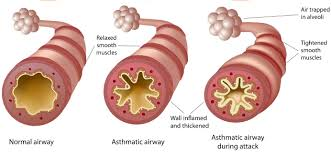Which assessment finding indicates to the nurse that the client who sustained a fractured femur in a motor vehicle accident is experiencing fat emboli syndrome?
Petechiae on the chest.
An edematous calf.
Elevated temperature.
Paresthesia distal to the fracture.
The Correct Answer is A
Choice A Reason
Petechiae on the chest are a classic sign of fat emboli syndrome (FES). FES is a rare but serious complication that can occur after a long bone fracture, such as a femur fracture. The petechiae result from small fat droplets that travel to the skin's capillaries and cause pinpoint hemorrhages. This symptom is part of the classic triad for FES, which includes respiratory distress, neurological symptoms, and a petechial rash.
Choice B Reason
While an edematous calf may be a concern for deep vein thrombosis or other complications following a fracture, it is not a specific indicator of FES. Edema in the calf could be due to various reasons, including local trauma from the fracture itself or immobilization.
Choice C Reason
An elevated temperature can be associated with many post-injury complications, including infection or inflammatory response. However, it is not specific to FES. While patients with FES may present with fever, it is not one of the primary diagnostic criteria.
Choice D Reason
Paresthesia distal to the fracture could indicate nerve damage or compartment syndrome, which are important to assess in a patient with a femur fracture. However, paresthesia is not a specific sign of FES. The neurological symptoms associated with FES are more generalized and often include confusion or altered mental status.
Nursing Test Bank
Naxlex Comprehensive Predictor Exams
Related Questions
Correct Answer is B
Explanation
Choice A Reason:
Using accessory muscles while breathing is a sign of respiratory distress and indicates that the client is working harder to breathe. This is not a desired outcome of treatment and suggests that the asthma exacerbation is not under control.
Choice B Reason:
The ability to answer questions in full sentences suggests that the client's airway is not severely obstructed, which is a positive sign of effective asthma treatment. When asthma is well-controlled, individuals should not experience significant shortness of breath that limits their ability to speak.
Choice C Reason:
Diminished breath sounds can be a sign of severe airway obstruction and are not indicative of effective asthma treatment. Ideally, lung auscultation should reveal clear breath sounds without wheezing, indicating good air movement throughout the lungs.
Choice D Reason:
Restlessness and anxiety can be symptoms of hypoxia, a condition where the body or a region of the body is deprived of adequate oxygen supply. This is not a sign of effective asthma treatment and may indicate that the client's asthma is not well-managed.

Correct Answer is C
Explanation
Choice A Reason
Urine negative for ketones is a normal finding and does not typically indicate an acute problem. Ketones in the urine can be a sign of uncontrolled diabetes or starvation, but their absence is expected in a well-nourished individual who is not in a state of diabetic ketoacidosis.
Choice B Reason
Sodium at 135 mg/dL and Potassium at 3.5 mEq/L are within normal ranges. The normal range for serum sodium is approximately 135-145 mEq/L, and for serum potassium, it is around 3.5-5.0 mEq/L. These values do not indicate an immediate concern for the patient with urosepsis.
Choice C Reason
A BUN of 34 mg/dL and Creatinine of 4.2 mg/dL are concerning. The normal range for BUN is approximately 6-20 mg/dL, and for Creatinine, it is about 0.6-1.2 mg/dL for males and 0.5-1.1 mg/dL for females. Elevated levels of BUN and Creatinine indicate impaired kidney function, which can be a complication of urosepsis and the nephrotoxic effects of gentamicin and vancomycin.
Choice D Reason
A white blood cell count of 12,000/mm³ is slightly elevated, which may be expected in a patient with an infection such as urosepsis. The normal range is approximately 4,500-11,000 WBCs/mm³. While this should be monitored, it does not require immediate reporting unless there is a significant change or it is outside the patient's baseline.
Whether you are a student looking to ace your exams or a practicing nurse seeking to enhance your expertise , our nursing education contents will empower you with the confidence and competence to make a difference in the lives of patients and become a respected leader in the healthcare field.
Visit Naxlex, invest in your future and unlock endless possibilities with our unparalleled nursing education contents today
Report Wrong Answer on the Current Question
Do you disagree with the answer? If yes, what is your expected answer? Explain.
Kindly be descriptive with the issue you are facing.
